THREE ACTIVITIES FOR TIRED AND CRANKY KIDS
/What to do with tired, craky kids after a long day of school.
Read MoreWhat to do with tired, craky kids after a long day of school.
Read MoreFluffly, air dry clay make a great #invitationtocreate.
Read MoreHow I am supporting the development of kind, generous children.
Read MoreDoes messy play feel intimidating and overwhelming?
Read MoreAre mistakes valuable? How to speak to our children about making mistakes and embracing imperfections.
Read MoreTips for getting your kids into the kitchen and cooking with Raddish Kids.
Read MoreLooking for a few simple tricks to keep your children occupied while you visit your favorite restaurant?
Read MoreTraveling with kids? Tips for preparing them and packing a perfect kid carry on bag.
Read More
Has your little one ever clung to you when it was time to drop them off at school, camp, or the babysitter? It can be so hard. As an early childhood educator and a mom of three, I have been on ALL ends of the separation/ attachment situation and it is not easy for anyone involved.
This year is Sloane’s second summer at day camp with her big siblings. The camp is on an island and the children take a ferry boat to get there and back. Last summer, I was a nervous wreck about sending my little peanut off to the island with the big kids. I was terrified it would be too long of a day for her. What if she slipped on the gangway getting on or off the boat? What if she needed something and couldn’t/ wouldn’t speak up in an unfamiliar setting? (By the way, I had zero qualms sending either of the big kids at her age, but I can’t help but feel protective of S). I was pretty darn good at hiding my uncertainty and exuded all of the confidence I could muster as I waved her off. Guess what? She was better than fine. She loved it and happily trotted off to the boat each morning.
This summer, the children and I were equally excited for camp to start. They couldn’t wait to get to their beloved island and sail, go tide-pooling and dock jumping. I couldn’t wait to wave them off and run home and tend to my fourth child- this little business of mine. All four of us eagerly awaited the first day.
When we arrived at the camp meeting spot, the kids excitedly clamored out of the truck and grabbed their backpacks and lifejackets. All of the sudden I felt Sloane’s little hand in mine and she looked at me with huge eyes and said, “I changed my mind. I don’t want to go to the island this year. I’ll just stay home with you, mom.” HUH? I was totally unprepared for this. Still, it didn’t seem like a big deal. Just first day jitters, right? Wrong.
I firmly and lovingly told her that it is okay to be scared and brave at the same time. It is okay to not feel one hundred percent comfortable and get on the boat anyway. She managed and I didn’t really even think about it for the rest of the day. She came home exhausted, happy and a smidge dehydrated. All good.
Day two? Not good. First of all, she woke up thinking it was a regular beach day for us. She was somehow shocked when I told her it was another camp day, and in fact, there would be camp all week. She was a little testy in the morning, but nothing totally out of the ordinary for my spicy girl. Off we drove to meet the boat. I walked her to her counselors and her group and her eyes filled with terror. She really didn’t want to go. She said that she is too sad saying goodbye and that she felt like she was going to cry for me the whole time on the boat. I stayed strong and told her that her counselors know how to help her and that soon she would feel better. I told her again, that it was okay to be scared and brave at the same time. Thankfully, Nate, my eleven year old, offered to sit with her on the boat. She still had to walk there with her own group and meet him, but that helped a bit. Little tears seeped down her face but she reluctantly went to her group. Like the day before, she came off the boat grinning in the afternoon, singing camp songs and retelling stories about her day over and over.
Day three was The. Worst. She clung to me the second we got out of the car. According to Sloane, there was NO way she was going to camp. No amount of comforting, cajoling, or distracting was going to snap her out if it. Oh, how I wanted to just scoop her up and bring her home with me. But here’s the thing- I happen to know a lot of separation and attachment. And I also know my girl pretty well. I am sure that she is having fun at camp. I am positive that this is just a hurdle for her to cross, not a massive mountain. (For some children it is a massive mountain.) She’s always been slow to warm up, but once she does, she can barely keep her mouth shut. Even through my own pain and anxiety about seeing her this way, my mom-instinct told me that she needed to face this head on.
Each morning, the children walked with their groups down to the dock to meet the boat. After peeling a crying Sloane off of my body, I cannot tell you how badly I wanted to turn the car into the dock parking lot and wave to her and make sure she was okay. You know, I just wanted to put my eyes on her one more time to make sure all was well. But I didn’t do it. You know why? Because that’s about me, not her. In this particular situation, my barreling in there and waving one more time, seeing her off for five more minutes, would only make the separation longer and more painful. Sure, maybe I would feel a touch better seeing her holding hands with her counselor or warming up to a friend, but if she saw me, the anxiety would return. So I didn’t do it. As I sit here writing this, I hope she is having a fun, carefree day, and that we will win this battle with separation without turning it into a war.
Be honest. Do not sneak out. Even if it feels harder to stay, sneaking out only makes your child feel insecure. Show them that you can help them manage their emotions during the hard times as well as the easy, happy times.
Be confident. Our children take cues from us. From the time they are very small, our children reference us for feedback about new situations. Have confidence that your child can do hard things. Believing in them is more than half the battle. If you see their camp or school as a safe environment, they eventually will too. Acknowledge the uncomfortable feelings that your child is having, but stay calm and confident. Don’t be scared of their feelings or they will be too. Exude confidence in your child and their caregiver.
Tell your child where you will be. Give them an image in their mind (or for really little ones an actual picture of you) of where you will be. Example: While you are at camp, I am going to go to the store to buy food for dinner, then I will drive to work and then I will have lunch. After that, it will be time for me to come and get you.
Allow tears and other uncomfortable emotions. Separation can be difficult and it is so important to acknowledge that. You might be embarrassed or uncomfortable that your kiddo is the only cryer, but remember that expressing emotion is so healthy. Also, emotions show up in lots of ways, not just your typical teary eyes.
This too shall pass. I am currently IN IT, so I know how hard it is to believe. But, in his own time, your child will be ready to separate smoothly and so will you.
It felt to so hard to say goodbye to mommy yesterday. You cried and held me so tight. You are still learning that it’s okay to be away from me and that I will always come back.
It is okay to be scared and brave at the same time. Even though this feels tricky, I know you can do it.
Tomorrow, you will go to camp again. What would help you feel better about saying goodbye? Would you like to keep a picture of me in your pocket or bring a lovey to cuddle?
Even if you cry, and even if you are worried, your teacher will still help you say goodbye to me. She will hold your hand and stay with you until you feel like playing.
When it is time to drop you off at camp, I will stay for five minutes and then I’ll say goodbye. First we will find out the schedule for the day, then I’ll help you find your favorite counselor, then I’ll kiss you three times and say goodbye.
From one mama to another, I truly hope this post helps you find some solace in the pain of separation anxiety. - Lizzie
I hope you found this post helpful. If you want to hear more from me, please be sure to subscribe to my blog and join the conversation over on Instagram. -Lizzie
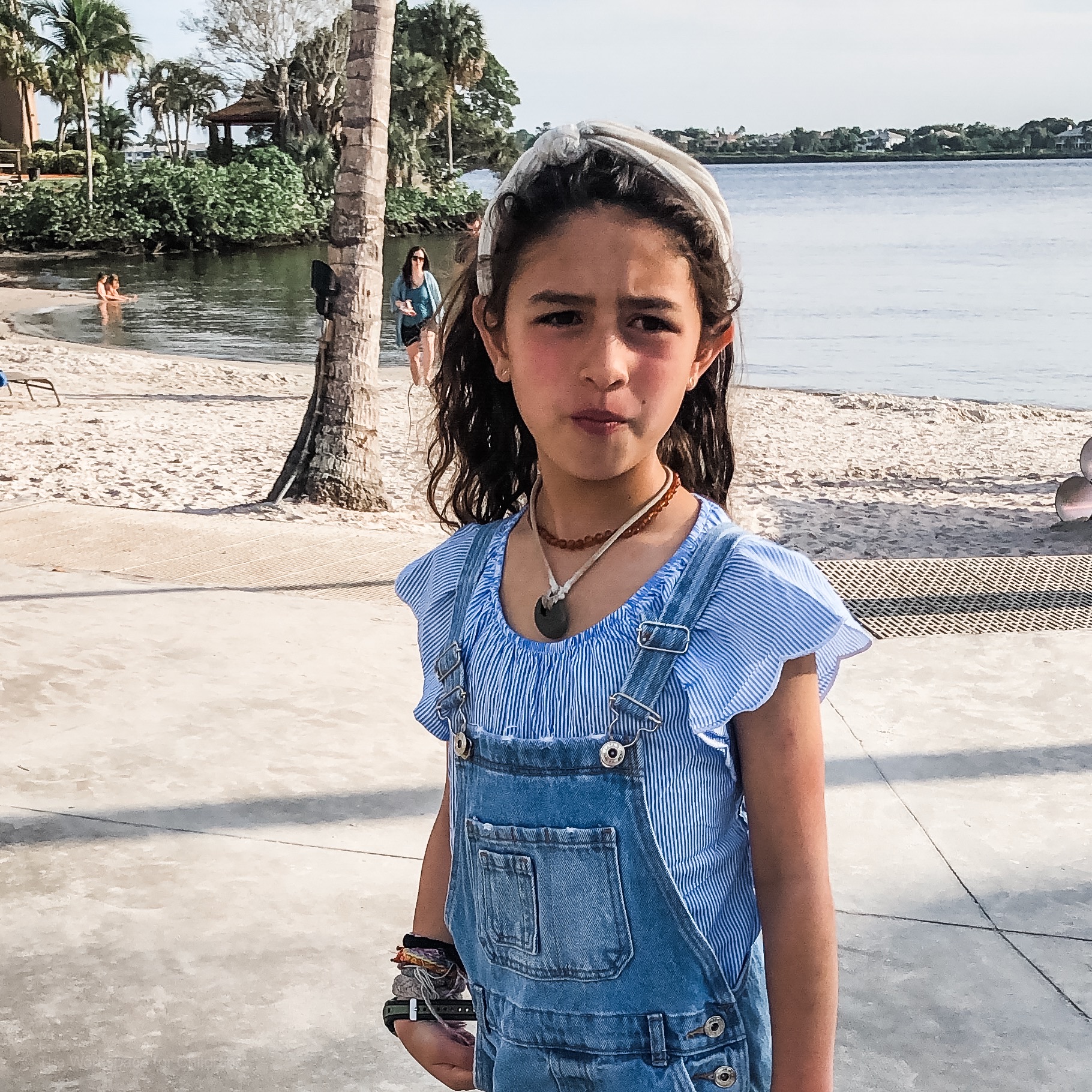
In this age of super-parenting, there is pressure to speak ‘lovey-dovey’ to your children ALL THE TIME. We are supposed to give them choices, and allow them to emote and we are to endure ALL sorts of self-expression, right? Maybe not….
Here’s how I see it-I am the mom. I am in charge and I am as patient as I can possibly be in that moment. I try my best to give reasonable choices when it is appropriate and not to be a yeller… but I am also a human and it is important for my children to see me that way. I refuse to speak sweetly all the time. When they are pushing my buttons, and annoying me, I think it is okay to show it.
Also, I speak to them in a normal tone of voice. They are people and deserved to be treated as such. When I observe an adult speaking in that babyish, sing song-y tone to children, it makes me cringe a little bit. Do you trust someone who alters their voice and personality just for you? I don’t.
Let your voice reflect how you feel about a situation. When your small child is acting out they are begging for limits. Set them clearly and firmly. Don’t be a sweet and nervous or pretend you don’t notice and then wait until you get to the safety of your car where you lose your temper, start screaming at your child and perhaps crying yourself. Your child is learning to read social cues from YOU. Especially when they are small, your children reference you to figure out how to read a situation. If you are acting all sweet and sappy in public and holding it all in until you lose your mind, what are you teaching them??
I give you permission to be real with your child. Even your small child. They bit you? Say OW firmly and mean it. Are they doing something you don’t like such as pulling your hair? Don’t laugh and call them silly. Tell them that it hurts and that you want them to stop. It is OK to say, “I don’t like that.” We want them to speak up for themselves, right? This is how they learn.
We need to stop complicating everything for the sake of looking like an unflappable super mom. That super-mom does not exist.
Speak kindly and truthfully to your children. Be firm and set limits when appropriate. Do not tell them they are silly and then giggle if what you really mean is that you are embarrassed and you wish they’d stop lifting your dress in the supermarket. They won’t be able to decode your complicated message.
I feel anxious when I see a mom speaking timidly to her tantrum-ing toddler. She is eyeing the crowds around her and trying on her best “mothering phrases” that she read in a viral Facebook post about how to speak kindly to your toddler. She is worried about being judged by other moms if her snacks are not organic and her words are not sugar coated. That crap needs to stop. No one wins. It helps neither the child, nor the parent. Our children are supposed to have tantrums. They need to push back. If your kid is fighting you about leaving the park and you are still leaving, you are doing a GREAT job.
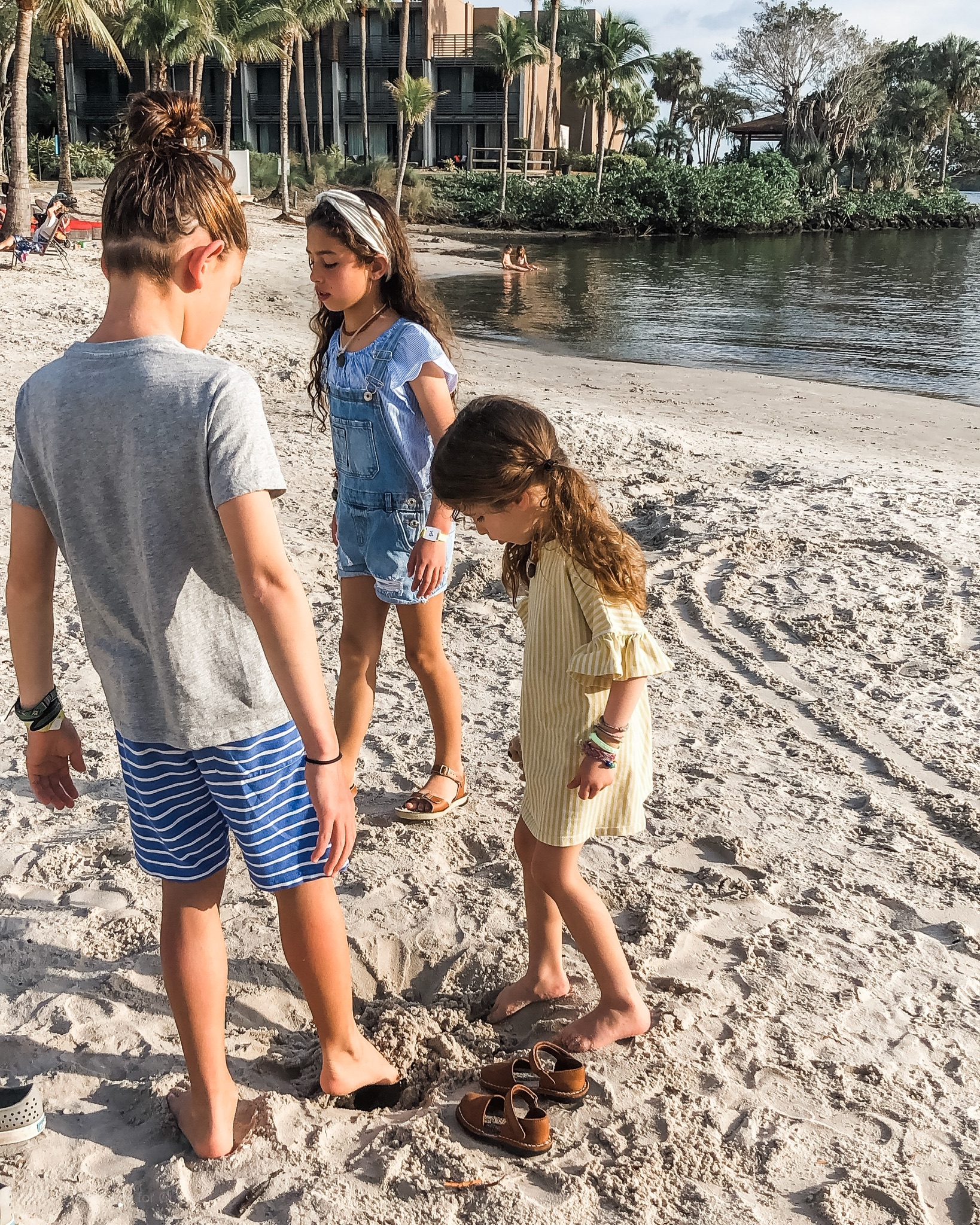
I hold no judgement towards the parents and teachers who are constantly spinning their wheels to say the exact right thing, to present the most beautiful looking project or meal, or to skillfully bribe their child out of the park without a tantrum. We are all being conditioned to act this way. It scares me. We are forgetting how to parent with our own instincts. We are foregoing simple, face to face interactions for complicated craft projects and mandarin lessons. We are getting so burned out making things look and sound perfect that we are not seeing the true beauty right in front of our eyes. It is SO much more important to have the strength and energy to look our child in the face and read a book together than it is to run yourself ragged between a zillion activities while cooking the perfect meal and providing service with a smile at all times. Looking and acting like a perfect parent sounds exhausting and miserable. It serves no one, especially not our children.
Do yourself and your child a favor and BE REAL. BE WHO YOU ARE. Try your best to be patient and to speak kindly, but also, be firm and clear when you need to. Your child will thank you. Your parenting life will be easier and so much more fulfilling.
I hope you found this post helpful. If you want to hear more from me, please be sure to subscribe to my blog and join the conversation over on Instagram.
-Lizzie
Being bored is a gift. It’s free, and yet, the most valuable treasure you can bestow. Being comfortable with boredom is a practice. In the beginning it hurts a little. When you are a parent, there’s a space where you think you need to just jump in and provide direction. Just wait. Ride through. Be there on the other side. Know your child can handle it. They might whine. It might be annoying. There might be a mess to clean up afterwards. What happens when you provide the mental and physical space for your child to be bored?
What are your fears around children being bored? What are we afraid might happen?
Trust me, I know how challenging it can feel to have bored kids. Sometimes, we feel it is our duty as parents to provide our children with constant entertainment. We take them to the newest movie, the arcade, the trampoline park. We line up playdates and sign them up for lots and lots of classes. We pack our Saturdays and Sundays with well-intentioned activities designed to keep our children occupied. We spend our hard-earned dollars on trips to the science center and and fair. We never want our children to idle, less they become… BORED.
Okay, I am being a little dramatic. But I want to make a point about our parental fear of children getting bored. Stay with me.
Often, when my children are bored, they fight with one another. They nudge and irritate and it drives me NUTS. I am always tempted to jump in and give them something to do. I try really hard not to and here’s what that looks like in our home:
If I am feeling impatient, I separate them to their rooms or different areas of the house. Usually, in their solitude, they find something to do. My six year old will typically cry and pout and stomp around in her room. She will come out a few times and try to get me to change my mind. I always send her back up. The reason? I know that when she tolerates her uncomfortable feelings and lets them pass, she will eventually start to play. Sometimes, she’ll cuddle her lovey for comfort and that action in itself will begin a game of fantasy play.
When my oldest gets sent upstairs, he stares out the window. He is dreamy by nature and the new, tween moodiness factor is giving him lots of time to dream in his room. He has drawing materials and Lego up there, and even at eleven years old, can get deep into the creation zone.
Ruby, my middle child, loves art. She keeps a drawer full of her favorite supplies under her bed and when she is up there alone she loves to read, make origami and color. (And glare at me if I dare poke my head in…).
When my children are complaining of being bored, here is what I say:
You are bored? Hmm, I wonder what you’ll do…
Bored, huh? Do you need help coming up with some choices of what to do? The playroom is open, your room is open, and art in the kitchen is open. Which one sounds the most appealing right now?
Bored…? Maybe you can get a drink of water and think about what you did last time you felt bored.
Not sure what to do..? Hmm, let’s think this one out. Do you feel like you want to play alone or with someone?
-With someone? Okay, can you go see what Ruby is up to and if she will include you in her ideas?
-Alone? Can you think of something you would like to build or make and set yourself up?
HERE IS WHY I USE THIS LANGUAGE:
I want to model how to think about being bored. It does not need to be met with agonizing tears or fear. In scaffolding my thought process out loud, I am teaching my children how to meet their own needs around feeling bored.
SOMETIMES IT DOESN’T WORK:
If they are not going for it and are continually coming back to me I will say,
If you truly cannot figure it out, I am happy to choose for you. I have a list of chores that will keep you feeling busy and not bored. Do you want to start by collecting all the dirty laundry or vacuuming the rug?
That usually sends them running off with their next great idea.
Let’s imagine our young children as teenagers for a moment… They have the freedom to roam and are responsible for occupying themselves for much of the day. How do you want your child to feel at the prospect of a wide open day? Will they be anxious and feel the need to fill the hours with instant gratification on their phone or gaming device? Do you want their developing brains to crave constant external stimulation? Will they feel a sense of panic at the prospect of having NOTHING to do?
When kids are comfortable and well-practiced at being bored, they are able to look inside themselves for stimulation. They are comfortable thinking, writing, creating, hiking, etc. None of those activities offer instant gratification. But they do offer much more.
Of course, there will be external stimulation and plenty of instant gratification in the lives of our children. That is the world we live in. BUT… as their childhood brains develop, it feels really important to me to teach them to be comfortable being bored. They must learn to allow their developing brains to rest and stretch and GROW.
Some of the best ideas are born from boredom. Creativity thrives after a period of boredom. Our children need the opportunity to hear their own thoughts. That listening happens in the quiet moments of “boredom”.
I hope you found this post helpful. If you want to hear more from me, please be sure to subscribe to my blog and join the conversation over on Instagram.
-Lizzie
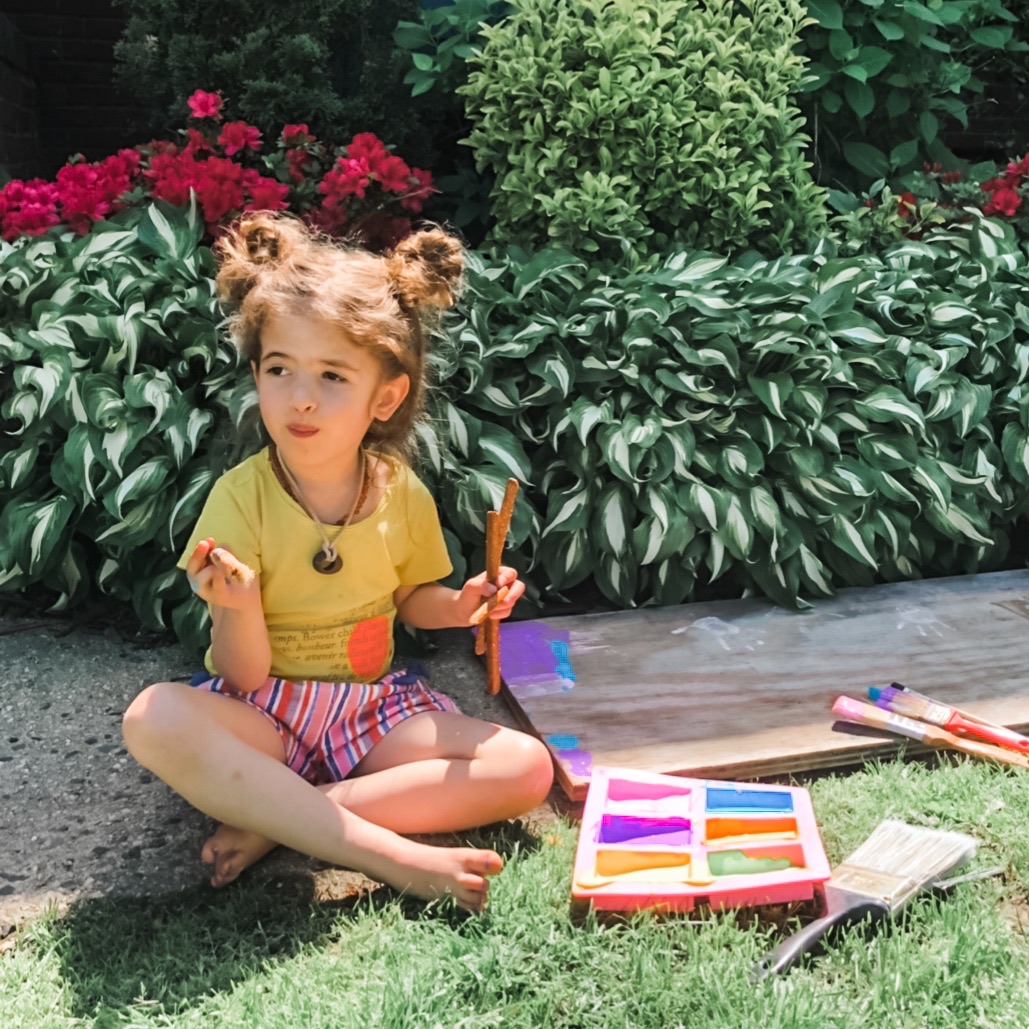
Slow afternoons are my favorite. Preparing a large, healthy-ish snack and setting out an art or play-prompt gathers my crew and the children who tag along with them. I love a full yard of kids. Yes, it’s messy and chaotic. But it also creates a wonderful sense of love and community. I like creating a safe, fun space where my kids can bring their friends to play and unwind. I’m going to miss the crazy one day, so I’m embracing it while I can.
Here are my top tips for creating an environment where children and adults love to come together.
SNACK TIME
Prepare a healthy-ish snack, and lots of it! I like to do a tray of cut up fruit- watermelon or summer cherries are always a big hit. Pair the fruit with a crunchy dry snack like a big bag of popcorn, pirates booty, or pretzels. Then add a “treat” which might be chocolate chip cookies, popsicles or mini Trader Joe’s ice cream cones on a hot day.
I bring out a big pitcher of icy water or juice boxes and a fat black sharpie marker. A marker? YES. This way everyone can label their cups/ juice boxes and you avoid waste and confusion.
ACTIVITY
Put out a SIMPLE activity to draw the children in when they first get home. The trick here is to use what you have, keep it very simple and inexpensive. Pay attention here…. DON’T put a lot of effort into it. That way you won’t be annoyed if they ignore the activity and run off to scooter. It also ensures that you won’t feel put-out or burned out over time.

SIMPLE YARD ACTIVITIES
My go-to is usually chalk, mallets, brushes and water (SEEN HERE). The kids can draw with chalk, or smash it up and make chalk paint. This activity is great for all ages. There are few kids I know who can resist the mallet to smash up some chalk… so therapeutic!
Sometimes, I’ll dig around in the garage and find old wood scraps and bring out hammers and nails and rubber bands. If they get super into it, I’ll add paint or sharpies.
Another simple one is a large thrifted mirror and paint sticks (SEEN HERE). Not messy, very engaging and lots of children can work on it at a time. Bonus? Clean up is a snap. You just need to hose it all down at the end.
GROWN-UP HANGS
With full tummies and after some time spent relaxing with the activity, the children all usually grab bikes, scooters and wagons and take off running and playing. This gives the adults a chance to catch up and get some much needed grown up conversation in.
LIMIT SETTING
Sometimes, I don’t mind if the children wander in and out of the house…. But sometimes, my house is clean and I want it to stay that way. We set clear limits about whether or not going in the house is allowed. I’ll just say, “Our house is closed today, sorry!” OR “It is an outside-only day.” Setting clear and firm limits regarding what you are comfortable with is KEY to enjoying big get togethers and not dreading them.
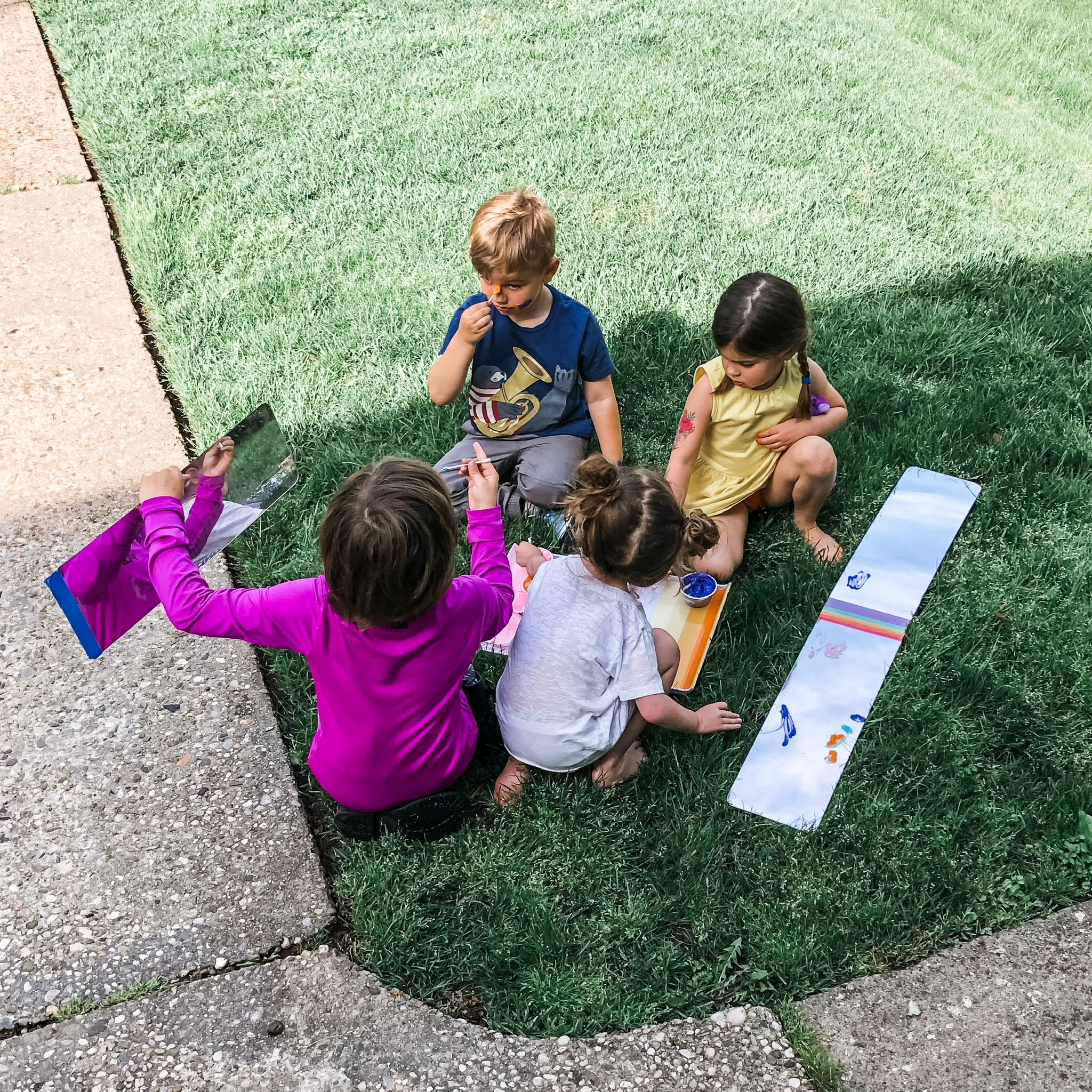
I am extremely lucky to live on a dead end street with lots of awesome families. My favorite Spring afternoons are spent on the front lawn with the dog running up and down fetching a ball while the kids get dirty and have a blast. Of course, there are many tantrums thrown, kids who argue, and skinned knees. But that’s just part of the fabric.
Do you have any neighborhood favorites? Tips for gathering your favorite crew of people? Share them with us!
I hope you found this post helpful. If you want to hear more from me, please be sure to subscribe to my blog and join the conversation over on Instagram.
-LIzzie
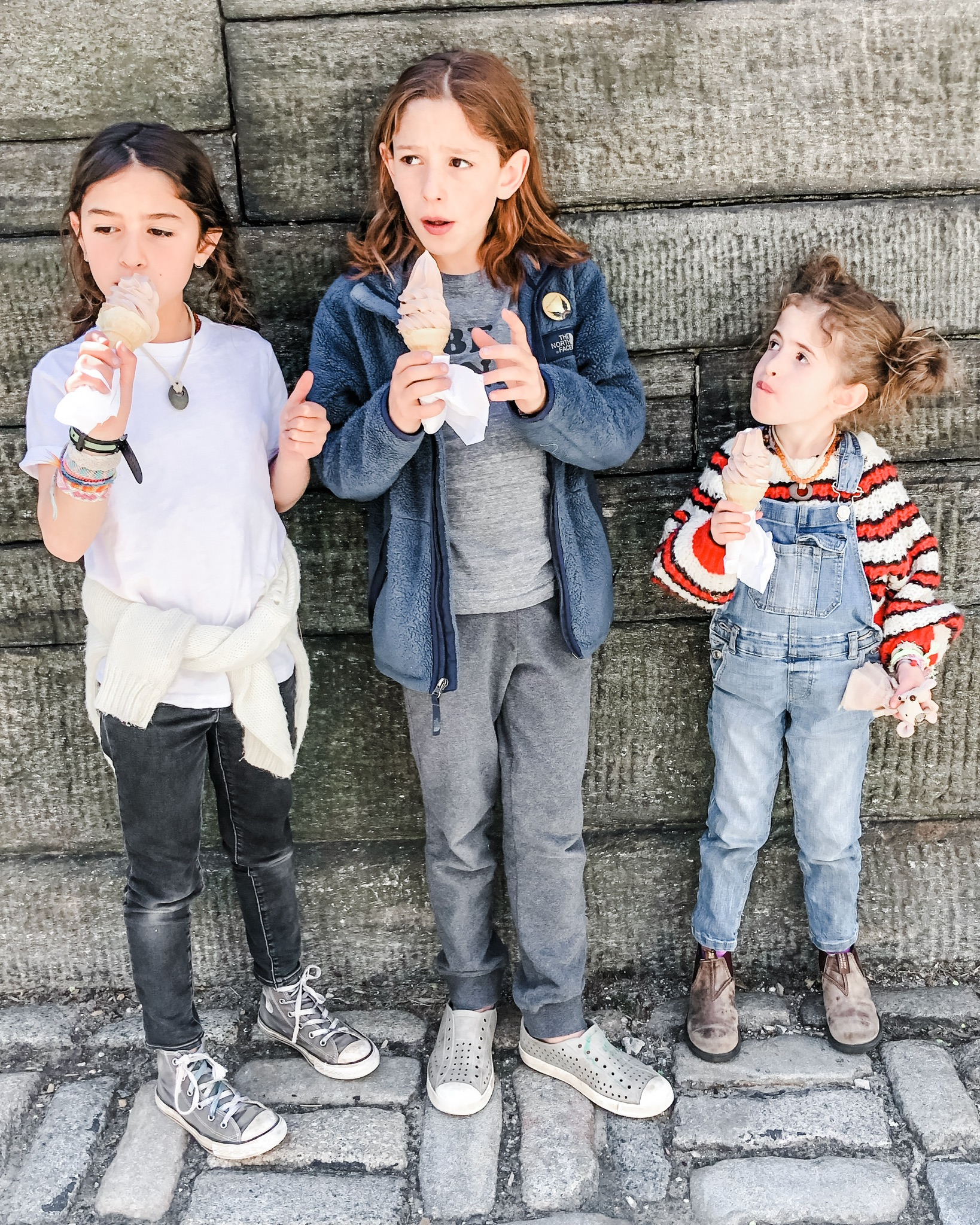
It’s Spring Break over here, so there is no school this week. The kids and I made a list of things we would want to do with our time and NYC was high on the list. We are very lucky to live a short train ride away (about 50 min.) so that made it an easy YES.
We had loose plans to take the train to NY Penn Station, walk to Madison Square Park, play and eat lunch, and then head to the Math Museum. But… the day was too beautiful to spend inside. Here’s how it all went down.
The big kids walked to the train station and Sloane scootered. She is six, and too old for a stroller. Her tiny little legs have a hard time keeping up with the big kids sometimes. Before we left, we talked about bringing the scooter. We called it her “commuter scooter” and we chatted about how riding a scooter in the city is WAY different than taking runs up and down out street. It’s different because we didn’t wear a helmet, which is usually a non-negotiable. It was different because instead of riding independently, she had to stay right next to me and if she wanted, I would pull her along. It’s so easy to “tow” your child with THIS scooter. Two feet on, and I can easily pull her along and steer.
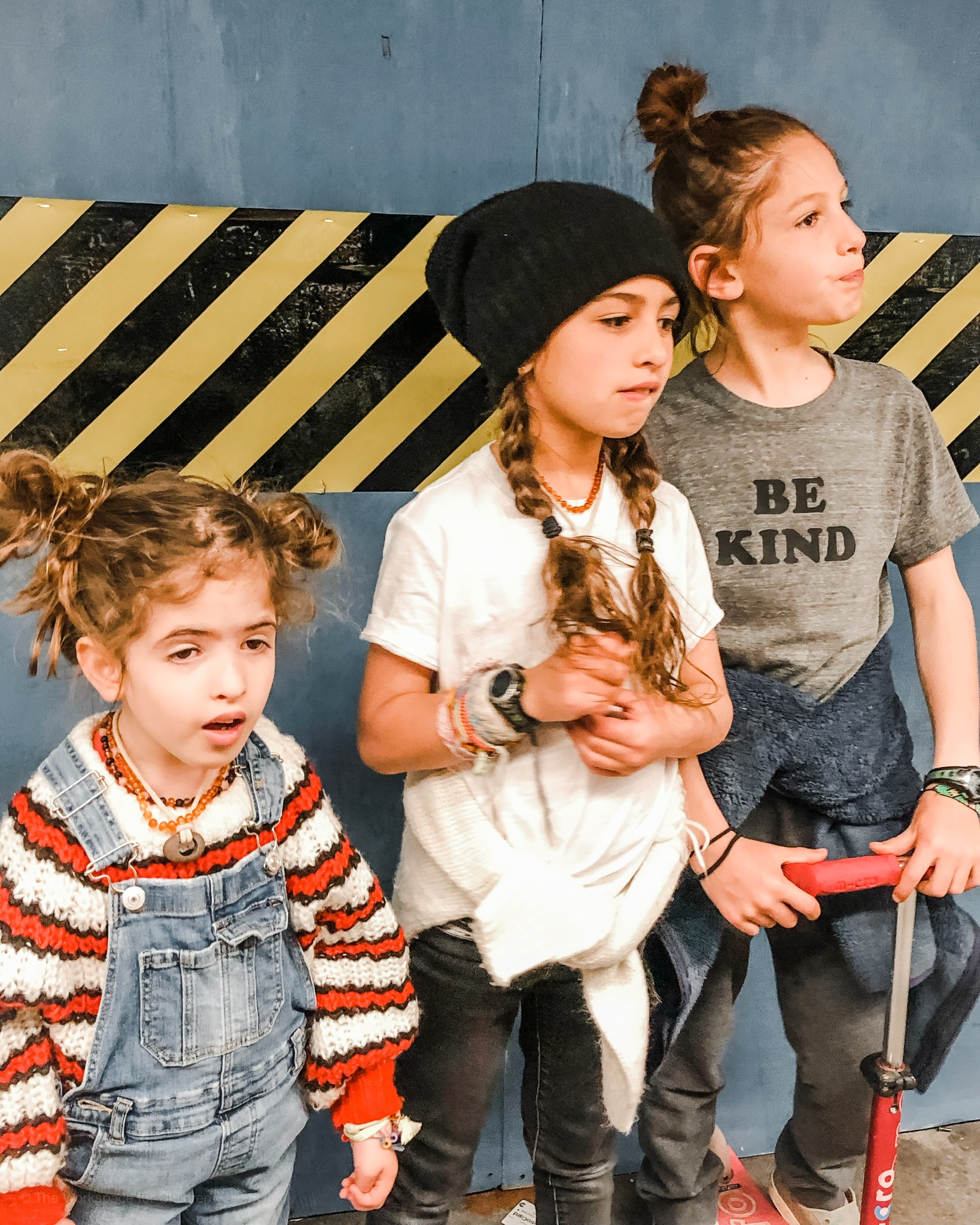
Sloane’s face when she saw the subway….
We took an 10:38 train in. We got to the station a little early and I let the children each choose lifesavers or gum for the train ride. I know they’d be fine with nothing, but for me, it’s the little things in life, and I like to make our adventures special. We rode the train in and walked across town to Madison Square Park and ate at Shake Shack. The kids had never been there before, and it did not disappoint. Next stop in the plan was to go across the street to Mo Math, The National Math Museum, but the kids asked to go to the playground first. Sure, why not (see me being flexible over here?!)?
The kids played and I sat in the sun, feeling good. I watched them run, squeal and climb, when I suddenly decided that the weather was too perfect to head inside to a museum. Their favorite NYC playground is the one in Union Square but I wanted to try something new. I did a quick Google search and decided on The Ancient Playground in Central Park. I called the kids over and asked them if they still wanted to go to a museum or if they were up for a new adventure. Guess which one they picked?
We headed off to the Subway and hopped on. It didn’t occur to me before, but Sloane had somehow never ridden the Subway! She was mesmerized and it was the absolute cutest thing. Nate and Ruby played their favorite game of “spot the rats” in the tracks while Sloane asked me a billion and one questions about how the subway works. We got on and the train was pretty empty. The kids seriously had the best time holding on and riding the bumps. I fought my inner germ-phobe and went along with it. I am so glad I did. They LOVED it.

It was an easy trip into Central Park and we headed into the playground. Kids were off and running and again, I was sitting on a bench in NYC on this beautiful Spring day. Besides a few hiccups with Sloane, we could’ve stayed for hours, but I know from experience that it is SO important to quit while you are ahead. I knew we still had to get back downtown and get on a train back to Maplewood before the evening commute began. I enticed them with ice cream cones and off we went.
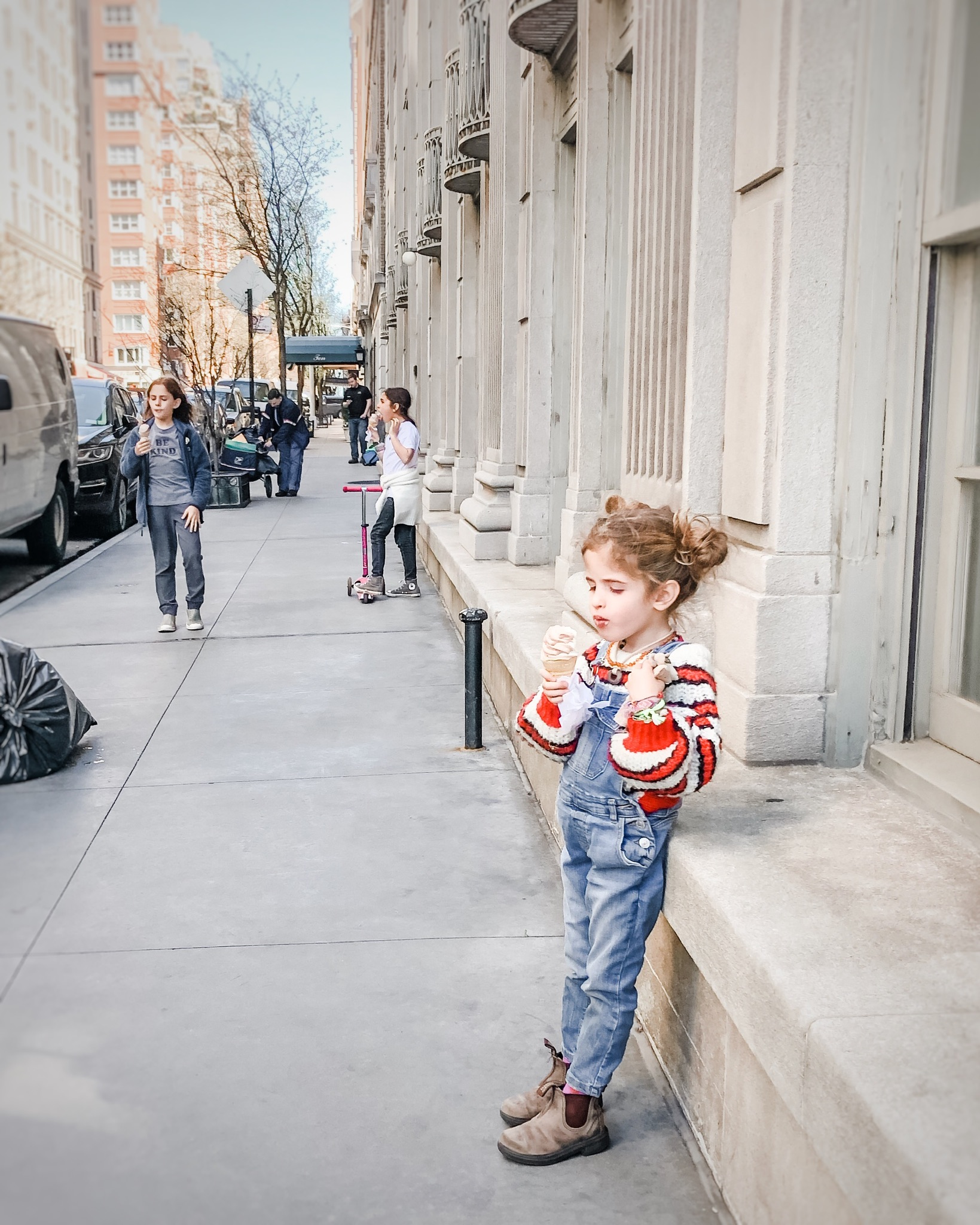
We made it back down to Penn Station and as luck would have it, a train to Maplewood was boarding. Thank goodness, because at that point we were all getting a bit tired. We made it home in one piece and I am so grateful for another adventure in the books.
Here are my quick takeaways:
Front end load. Pack snacks and water, wipes, and layer clothing. Knowing that basic needs are easily met means you can relax.
Follow your child’s lead. We literally went to the city to play at the playground. Could we have done that at home? Sure, but it was way more special this way. The kids had a blast and since they were happy, my job was much easier.
Quit while you are ahead. Remember NOT to stretch them to their limits. It can be tempting to stay when you are having fun, but ending on a high note is so much better.
Have a plan but be flexible. We switched it up today and instead of the museum, we hit up a new playground.
You know your child best. Think about what you will need to do in order to meet their needs and keep them feeling successful. For us, this was bringing along the scooter for Sloane. I knew she’d feel tired and frustrated trying to keep up on foot. The scooter was a total game changer.
Get out of your comfort zone and adventure with your kids! It will not always be as smooth as today was, but it is SO worth it. The adventures that don’t go well are learning experiences for everyone, and they will only make your next adventure easier.
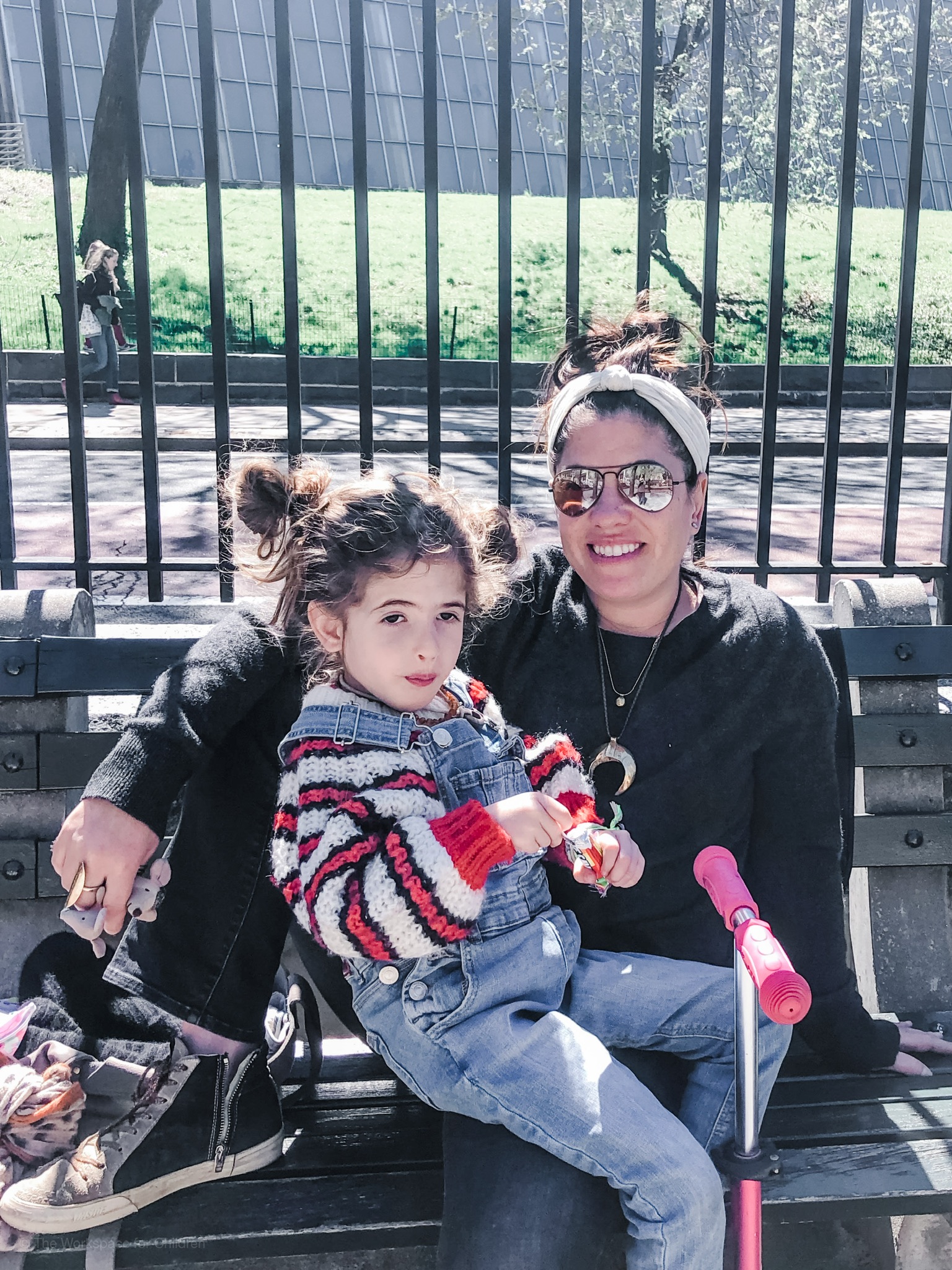
I hope you found this post helpful. If you want to hear more from me, please be sure to subscribe to my blog and join the conversation over on Instagram.
-Lizzie
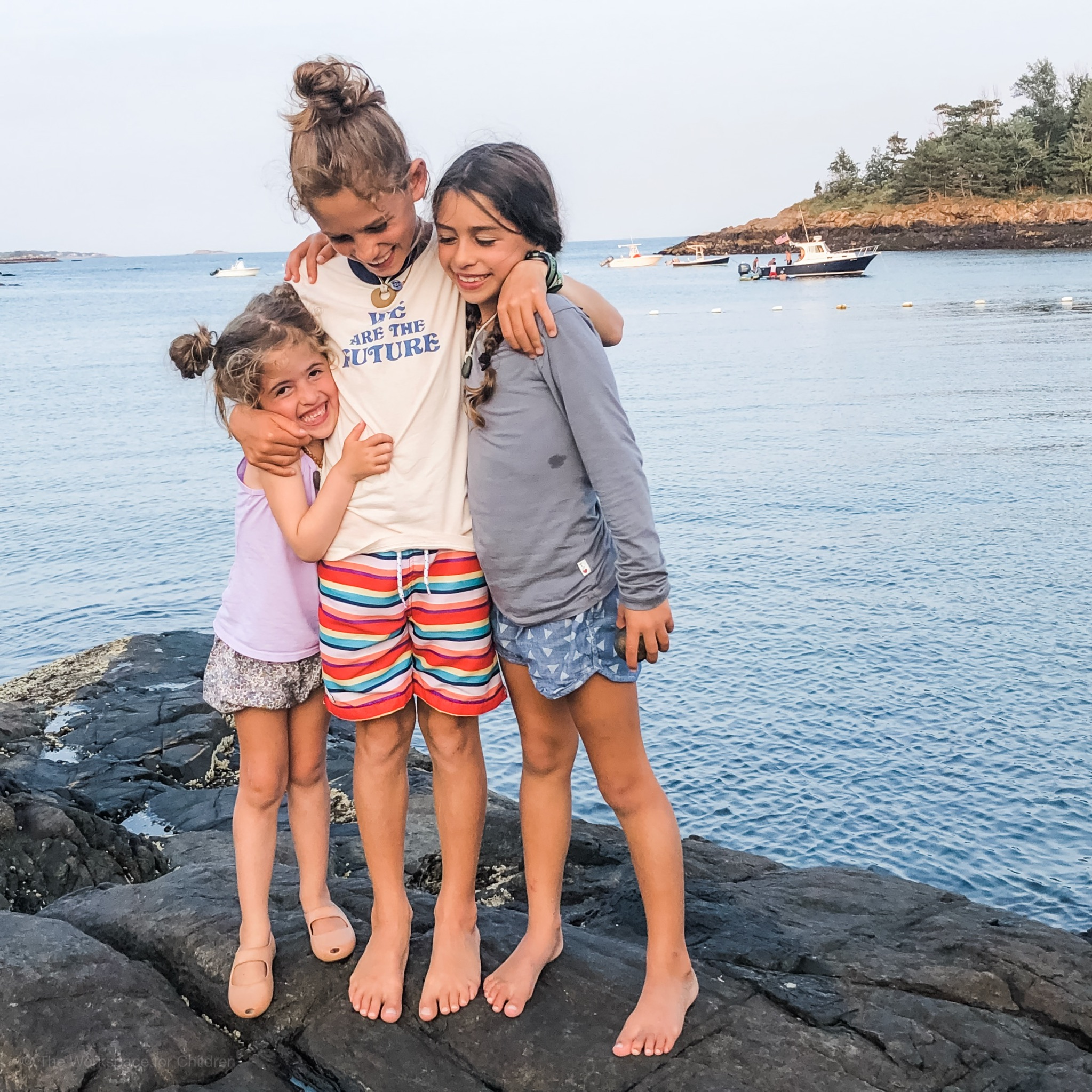
It’s ok to say no to your children. In fact, it is imperative. It is not your job to keep your children happy all the time. We are bombarded every day by images that portray smiling children surrounded my their young, stylish, doting mothers and fathers. Guess what? It’s not real. At least not all of the time. And it is certainly not the norm. In my opinion, it shouldn’t be.
Setting limits and saying NO is one of the most important things I can do to ensure that my children feel safe and loved. Setting limits and following through, regardless of the tantrum that ensues, is crucial to my ability to raise children that I can trust out in the great big world. Knowing that my children respect my authority and the limits that I have set for them shows me that they will know how to act in the face of danger or during risky play. They will learn to respect their own limits and limits placed on them by the environment.
Let me tell you a story... Last Spring, on one of the first warm days after a long cold winter, I headed out to our local park with my three children to meet up with a bunch of our friends. Needless to say, the park was bustling with nannies, parents, and tons of children. My two older kids took one look at the wet, MUDDY field, and after a quick glance to me for the a-ok, stripped off their socks and shoes and luxuriated in the mud. I mean, they really went at it (Like pigs in you know what). There is a little creek that runs adjacent to the park and they proceeded to run back and forth from the muddy field, to the creek to wash off, and back again. This occupied them and filled them with utter JOY for well over an hour. Upon my instruction, they were careful not to get the mud on any other children or on the climbing equipment where the clean and dry children were playing. My children were able to run and play freely with wet, muddy, bare feet, and still respect the other people at the park. I knew I could trust them to do this because I have been setting firm limits for them since they were babies and they have tested my boundaries every single day. That is their job.
Obviously, the mud play earned them a few strange looks, and I, as their mother, got some SERIOUS stink eye from a few other adults. That's totally okay with me. I am confident in my ability to parent my own children and I realize that my choices might be different from others. As I often say to my children, "Different families, different rules."
I overheard someone say disdainfully, “Those children have no rules.” Well, let me assure you, my children have more rules than most. I believe that it is because of those rules, limits and boundaries, that my children are able to play confidently and freely. They are not afraid of what others think, they are confident in their choices.
A lot of people ask me who cleans up the vast messes that my children occasionally make. People want to know why I am able to allow my children to use real saws and power tools from a young age. People ask me how I get my children to cook for themselves and for one another... and clean up. There is one collective answer to all of these questions....
My expectations are clear and there are consequences when they are not met. Do I sound mean? I know it can come across as harsh, but I assure you, it is love that fuels my decisions. I am not afraid that my children will not think of me as nice. I am not their friend, I am their mom. I am their confident leader who is able to guide them. Part of that guiding is done by setting up clear expectations and limits.
It is because my three children understand what is expected of them that we are able to go on such fun adventures. I am able to let them wander out of my eyesight in the woods because I know that they will come when I call them. I am able to travel with all three of them on my own, because I know that they will pitch in and help me.
Do they listen all the time? NO WAY!
Do they step out of line? ALL THE TIME.
Talk back? Yup.
Dawdle when it is time to get ready. YOU BETCHA.
It is their job to test limits and boundaries and it is my job to be firm and clear about the consequences. Most of the time I use logical consequences. I find that logical consequences work, and make the most sense in our world. Of course, I am not able to do this all of the time. Sometimes I lose my patience and then things turn topsy turvy. There are definitely days where no one is feeling it and we all fall apart. But you know what? That is totally ok. Those are the times we can refer to when we communicate about what works for us as a family and what does not work.

What works in your family? How do you keep your crew in line and also have fun?
I hope you found this post helpful. If you want to hear more from me, please be sure to subscribe to my blog and join the conversation over on Instagram.
-Lizzie

How happy are your kids when you say YES to playing in the mud?
Mine are practically levitating when they see a great mud puddle and they get the nod from me.
I know, I know, it’s wet, A MESS! But you know what? It’s totally worth it. I’ll tell you why.
Playing in mud is FUN. Good old fashioned fun. No phones, no iPads, just kids, nature and squeals of delight.
Playing in the mud is FREE. Do you know any other material that costs nothing, can be used wet, dry and somewhere in between? Oh wait, there’s sand at the beach… But unless you live at the beach, it’s back to good old mud.
Playing in the mud is HEALTHY. Studies show that when children play in the mud they are healthier. It’s totally true. Google it. I dare you.
Mud is readily available. Especially in the Spring when April showers bring… you guessed it! MUD.
Mud can certainly stain. So if it’s warm out, I would strip the kids down to their skivvies or an old bathing suit that you no longer care about. If it’s still cold, we love THESE awesome rain pants from our friends over at Biddle and Bop.
Set limits that you are comfortable with and encourage your children to communicate with you and with one another. Some children like splashing and covering each other and some are much more tentative. Model language for cooperative play before diving in and moderate a discussion among the children about what is and is not allowed. While mud play is certainly exciting and fun, it doesn’t have to be an out of control free-for-all.
Keep a clean towel on hand. Sometimes, a big splash can be uncomfortable or get in the eyes. Having a clean towel on hand makes it easy to recover and get back to playing.
Have a set of mud tools. Old thrifted pots and pans, shovels, and buckets. They are simple to source from thrift stores and enhance the play so much!
A large bin of soapy warm water for when you are all finished. The warm soapy water and rags are for your children to clean up most of the mud before coming inside to bathe. This saves you from having to clean your floors and tub. Trust me, I’ve learned this the hard way.
An empty laundry basket for stripping outside, BEFORE entering the house.
You can absolutely allow mud play WITHOUT A GIANT MESS.
Communicate your limits and set them. Stick to it. Trust me, your children will do basically anything to be allowed to get muddy.
Explain that you know how much fun it is, but also, that in order to do it over and over, it needs to be kept to a level that you are comfortable with.
My favorite phrase when my kids are getting a bit out of control is this: “Make me want to say YES next time. If you listen now, I will want to say yes to mud again and again.” I use this kind of strategy in many situations. It is a skill that you actually can teach with repetition. Remind them afterwards, “Remember when I asked you to stop playing and get cleaned up? You listened, and that made me know we can definitely do this kind of play again!” Also, randomly pepper these anecdotes into your daily conversations. At random times, I’ll remind my children about how much fun we had and WHAT MADE IT WORK. Remind them of how they listened and helped. Remind them of how much fun they had. Children love to be set up for success. Use it to your advantage.
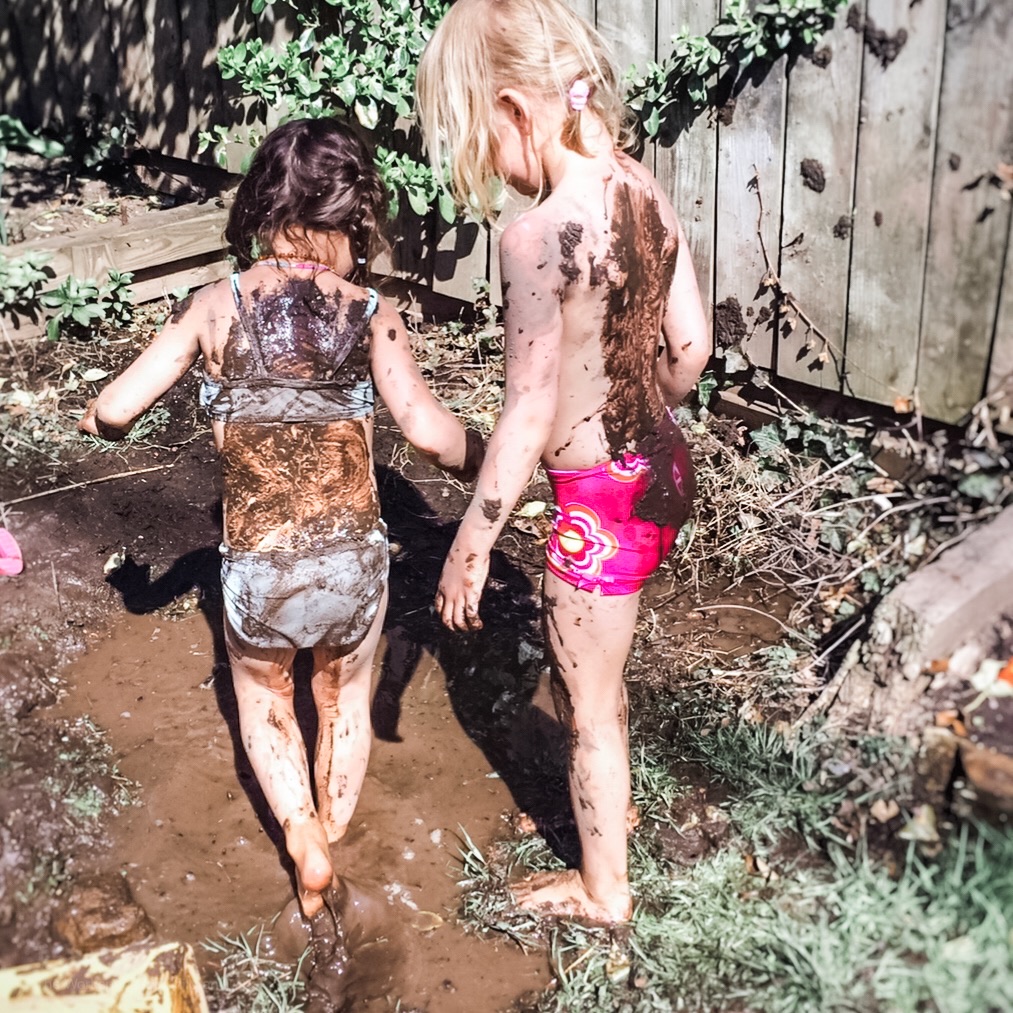
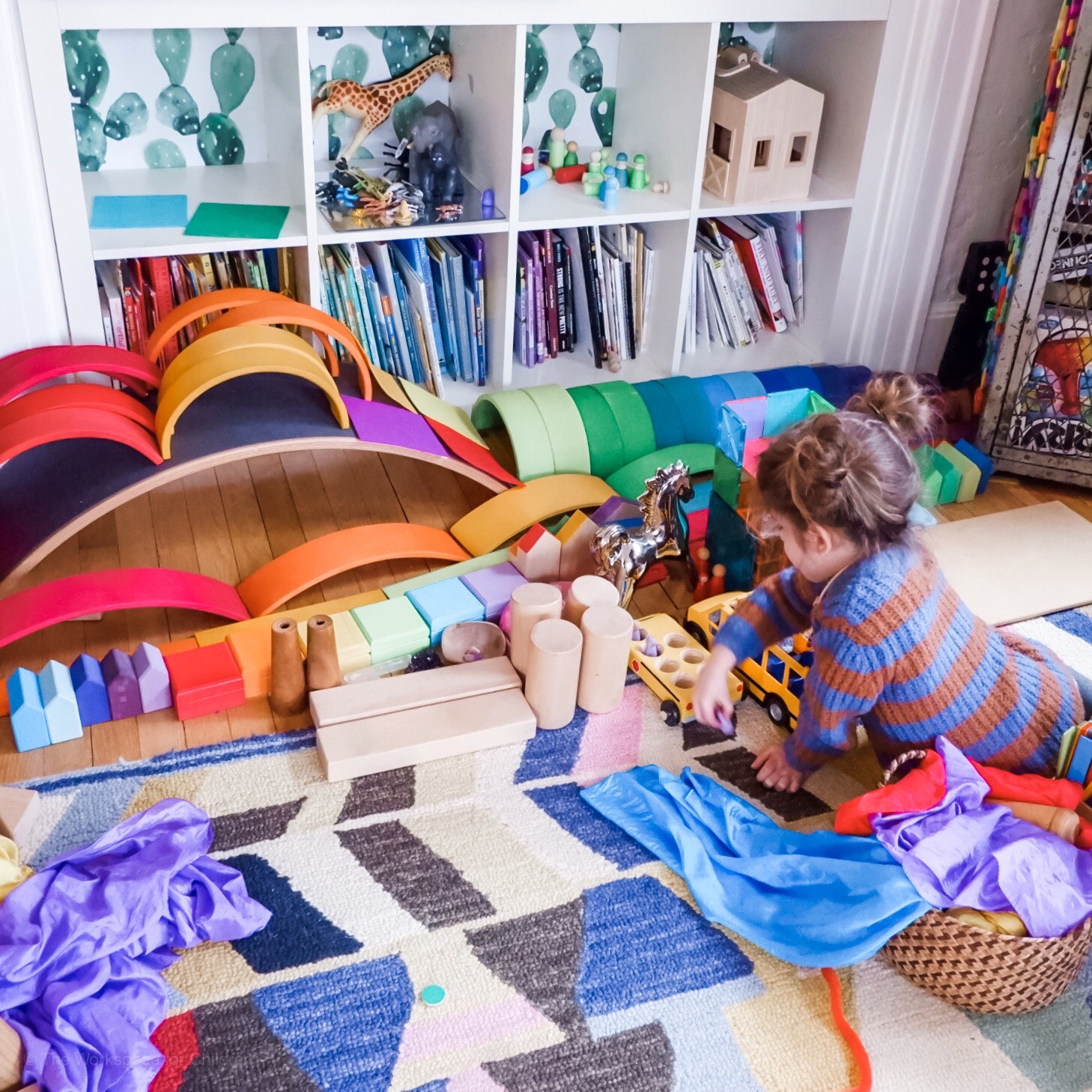
You guys, we had a yelling, screaming morning. It was total chaos. When everyone left, I took a second to breathe and think about how it could’ve gone differently. (Let’s just say…. Sloane was having a six-year-old tantrum and I met her tantrum and raised her one forty-year-old mama tantrum.)
For me, staying present and centered is usually the answer to whatever issue I am struggling with at the moment with one or all three of my kids. Regardless of the context, I know my children are begging me to SEE them and HEAR them. When they are misbehaving or whining or refusing to get dressed…. they want me to be in their struggle. They need me to acknowledge it. This being said, It doesn’t mean we have to bend on the limit that we’ve already set. It does not mean that they don’t have to finish that homework or put on their shoes. It does mean that if we can step out of the immediate chaos of the tantrum and just look our children in the eyes and hug them, even if its only for a minute, it really helps.
You know what else helps? Knowing that it’s not about you or your parenting. Kids need to struggle. They need to tantrum. When we can control our impulse to join the yelling and carrying on, the difference is tremendous. When we can stay calm under the pressure of their emotions, everyone wins.
I am certainly not saying that I’m always capable of this kind of parenting, but when I can muster it up, it REALLY helps. This morning was total chaos in our house. I jumped right into the mess. Next time, I will try harder.
Here’s the thing. Sometimes we all need help. When I need help in the parenting department I often turn to books. I return to the same favorites I’ve read in years past. Even just skimming helps jog my memory and get back in a better head space.
There are so many phenomenal books and podcasts out there. Today I am sharing my personal favorites with you.
My favorite podcast for family related inspiration is The Simple Families Podcast, hosted by Denaye Barahona, P.H.D. (She even interviewed me HERE about choosing great toys!)
Below are the parenting books that i find myself returning to again and again. (The Louise Bates Ames book is just an example. She has an entire series and I LOVE it.)
So, tell me, how do you help yourself when your kids are losing their minds and you are about to lose yours too?
I hope you found this post helpful. If you want to hear more from me, please be sure to subscribe to my blog and join the conversation over on Instagram.
-Lizzie
*some of these are affiliate links. Thank you for supporting The Workspace for Children.
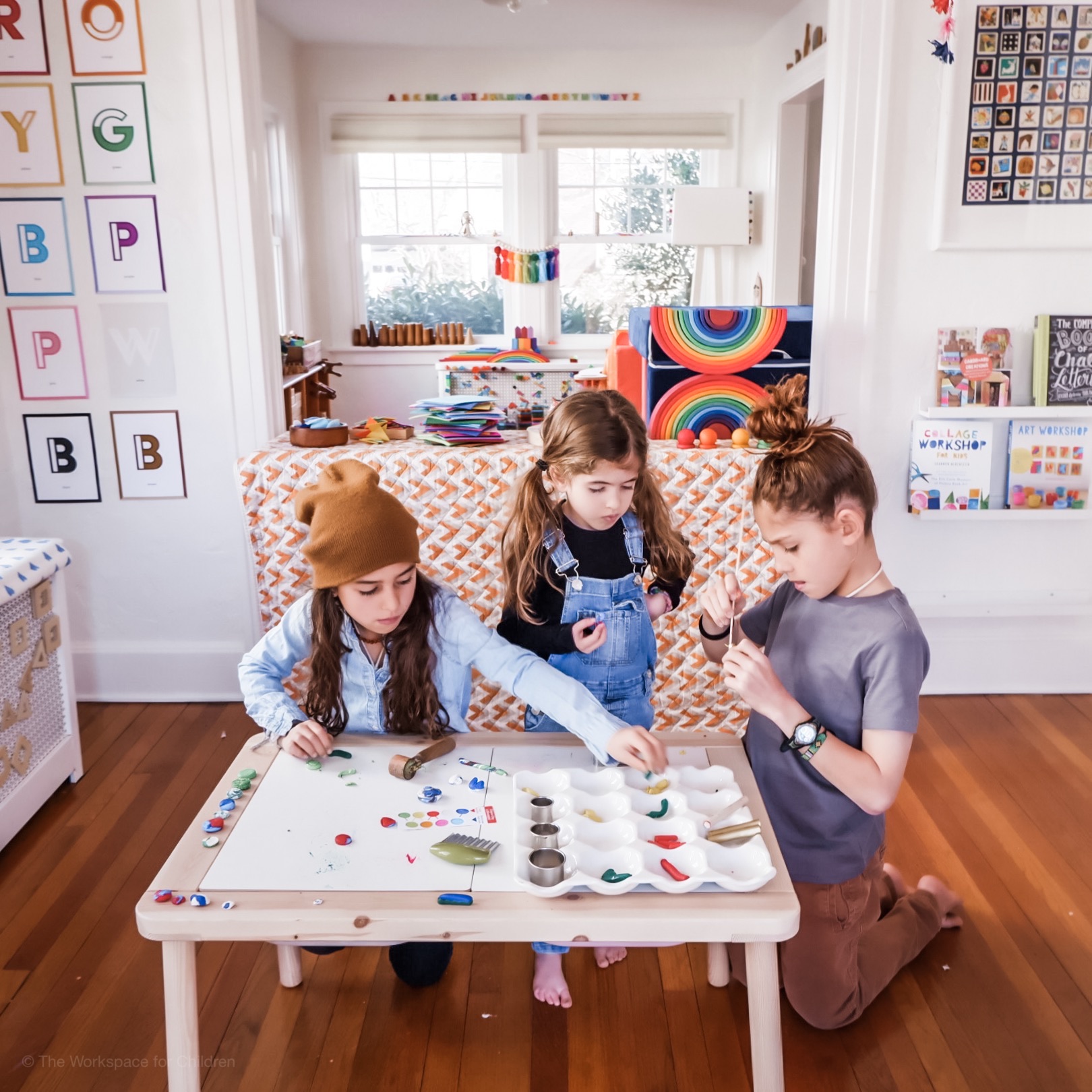
I don’t know about you guys, but my kiddos wake up early on the weekends. Last Saturday everyone was up by seven. It was too early to play outside or go anywhere, and I’d already said no to TV. I wanted an activity that would be good for all three children (ages six, nine and eleven) and I really didn’t want to start my weekend with a big mess to deal with. I pulled out our Crayon Clay that was sent to us from The Pencil Grip and set up a tray of our favorite materials. I find that how you approach the set up of any invitation to create actually does matter. Doing a little bit of extra work on the front end really pays off. Sure, I could’ve just opened the box and given them the packets of clay, but then there would’ve been fighting and whining and lots of requests for help.
Right away, Ruby (nine) knew that she wanted to mix the perfect shade of color. At first, she was frustrated. It took some time and string fingers to get that clay to blend. But when it did, it was so good.
Sloane wanted to make a set of circle crayons for a friend. She rolled the clay and then cut out little circles of color. I think they turnout great!
Nate made little a little snail crayon because he loved the idea that it could leave a trail of color.
When they were finished creating, we left the shaped clay on the table to dry and off we went. It dried beautifully (took about 12 hours) and the children now have a new set of crayons!!
This set is my new go-to birthday gift. It’s a great price point, and can be used by such a large range of ages. I am all stocked up! Click the images (affiliate links) below to find out where to get everything!!
I hope you found this post helpful. If you want to hear more from me, please be sure to subscribe to my blog and join the conversation over on Instagram.
-Lizzie
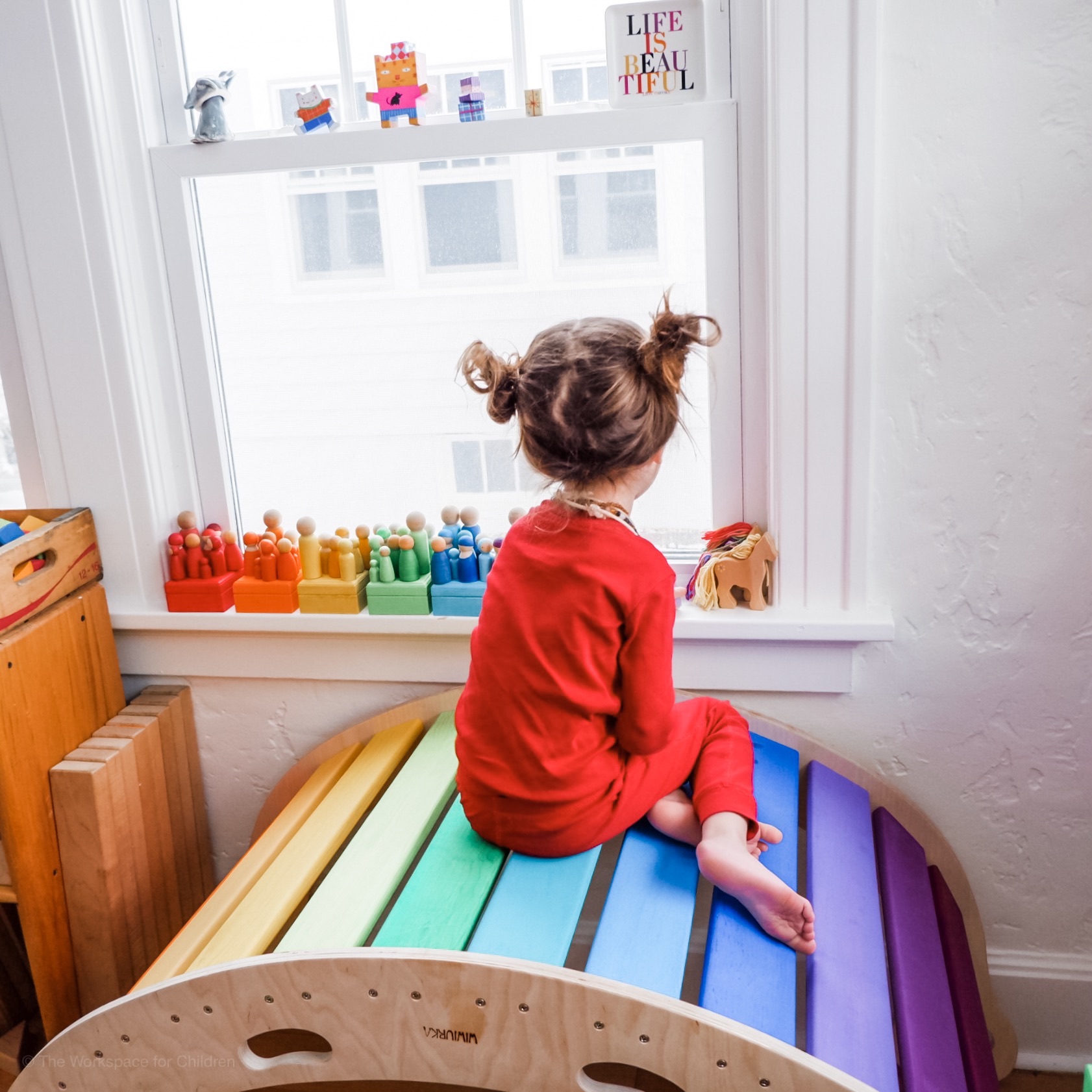
It is so important to let your children view your imperfections. You are teaching them to take risks and try- even if they don’t know what the outcome will be. You are showing them that life is not perfect, nor is it supposed to be. Guess what? They don’t care if the cookies you made for them are a little burned. They are just psyched you made them cookies! Plus, you are teaching them that it’s the thought that counts. An act of kindness does not need to be perfect. Not at all.
Pretend you made it just in time to the school play. Phew! You are there for your kid’s solo. They see you and a smile spills across their face. Do you think they care that your makeup is smudged or that your hair is in a messy mom-bun? Nope. They care that you showed up for them.
So you decided your little one would love a beautiful sensory bin to play with after school. You hop on Pinterest and get to work… only yours turns out a little, um, different than the picture. Guess what? Your kid will love playing with that soapy foam whether it is in Insta-worthy rainbow swirls or one big blob of color. They will still have a really fun time.
It’s lunch time in the school cafeteria. Do you really think your kid cares if his or her lunch is ready to be featured in the next big food blog? NO! They care that you packed them food that they actually like and want to eat. They care that you provided them with lunch money. They care that their tummy is full and that they have energy for the afternoon. Not one thought about your beautifully arranged cucumber slices
LANGUAGE PROMPTS FOR TALKING ABOUT MISTAKES AND IMPERFECTIONS:
Starting when the children were real little, I would point out my mistakes in a positive way:
“Oops! I meant to grab the wipes from upstairs but I forgot. Oh well, moms can forget!”
“We’ve arrived to the park and I left our snacks at home! I wish I had remembered. I’ll have to ask a friend to share with us this time.”
Sometimes, after either I or they made a mistake or something came out less than perfect, I would say, “Is is okay to make mistakes? Is it okay to try something and not have it work out the way you thought it would?” Opening this conversation from a very young age is KEY.
When the children were a bit older, we started having conversations about mistakes we made during the day and how we solved the problem.
“Guess what everyone, I took the dog to the groomer today for her appointment, but when I got there I found out that the appointment was yesterday and I missed it. I was frustrated and so was the groomer. I apologized for wasting her time and rescheduled for next week. Did you make any mistakes today?“
I really want my kids to know that I am not perfect and that they aren’t either. It takes a village and pointing that out is so important. I love to point out when I see them helping someone else or sharing how others help me. Keeping the conversation open and REAL is very important to me in raising my kids.
How do you speak to your children about mistakes?
I hope you found this post helpful. If you want to hear more from me, please be sure to subscribe to my blog and join the conversation over on Instagram.
-Lizzie
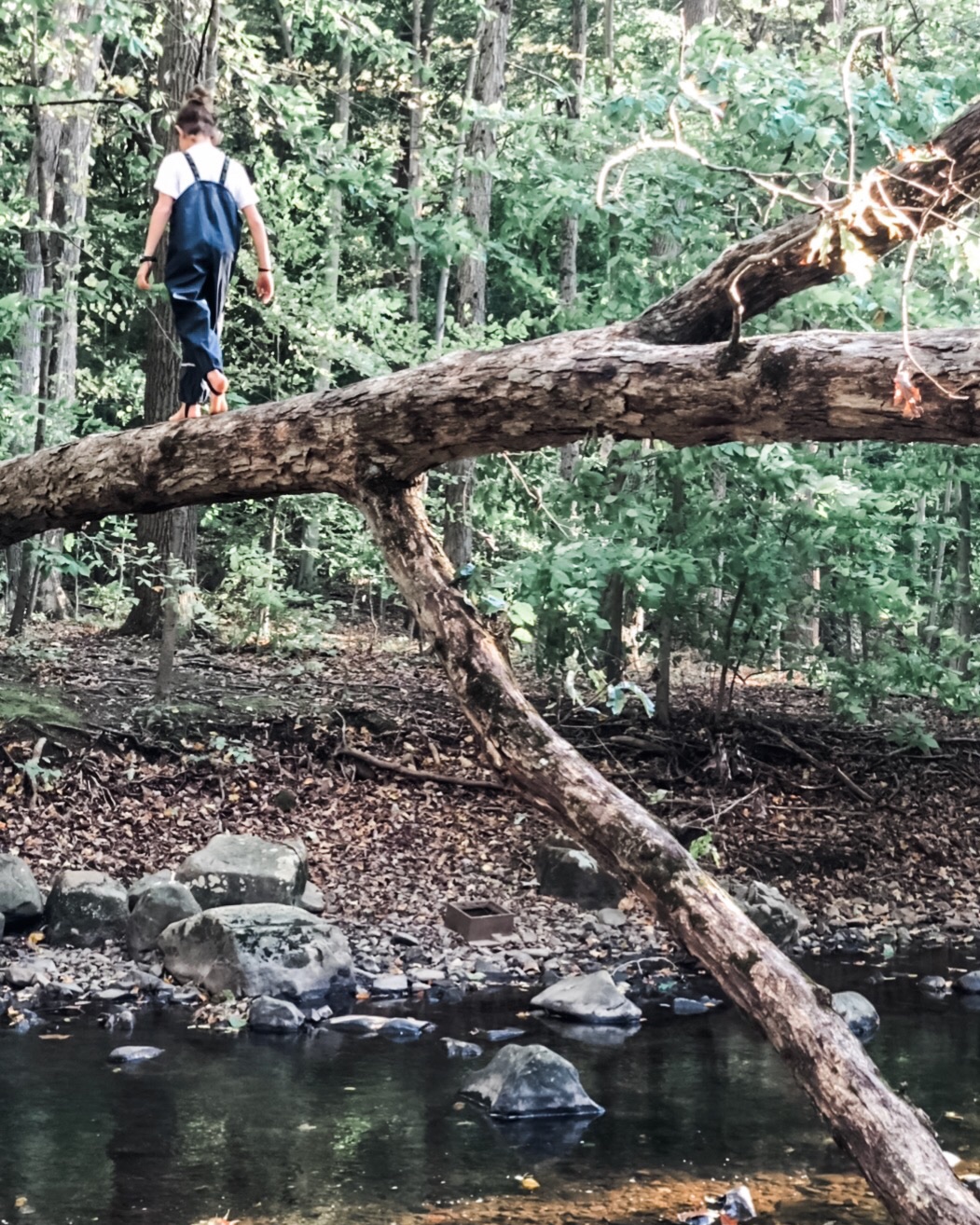
I’m that mom that allows her kids to climb the highest tree and scale the rock wall as far as they can comfortably go. I trust them to decide how far they can push themselves and whether or not they can safely get themselves back down to the ground.
Yes, this earns me the side eye sometimes. But here’s the thing- taking healthy risks in childhood allows children the opportunity to get comfortable with the uncomfortable. They are learning their limits and seeing where they can push themselves. We’ve been practicing this way of thinking since they were tiny tots.
If you can get up there yourself, you can get yourself back down. What if they need help? I’ll usually help them by telling the what to do, but I won’t put my hands on them to get them up or down, nor do I allow siblings or friends to lift them up or down when climbing. It is so important for safety that they find their own solid footing.
I won’t lift you up onto anything, if you can’t manage to get there independently then you are not ready to be up there. Like I said above, it is SO important for them to find their own footing for safety reasons. But having them get up on their own is also a great way for even the youngest children to set goals and work towards them. Sure, it can be very frustrating for the youngest sibling to see all the others get up high when she cannot yet do it. But that’s ok. She’s building her frustration tolerance and setting goals for herself. Once she can do it on her own? I love to say things like, “Can you remember when that was too hard for you? Now you are stronger and bigger and you can get up there all by yourself.”
Listen to yourself. Do you feel safe? Are you comfortable? I encourage my children to be risk takers but NOT to be RECKLESS. There’s a huge difference and we talk about it often.
I strongly believe that our children need to learn to evaluate risk by taking risks. The best way to learn is by DOING. How do you feel when your child takes risks? Are you cringing and calling out how worried you are or are you offering constructive support? I know it’s not easy. It’s scary to let them fly. .
I hope you found this post helpful. If you want to hear more from me, please be sure to subscribe to my blog and join the conversation over on Instagram.
-Lizzie